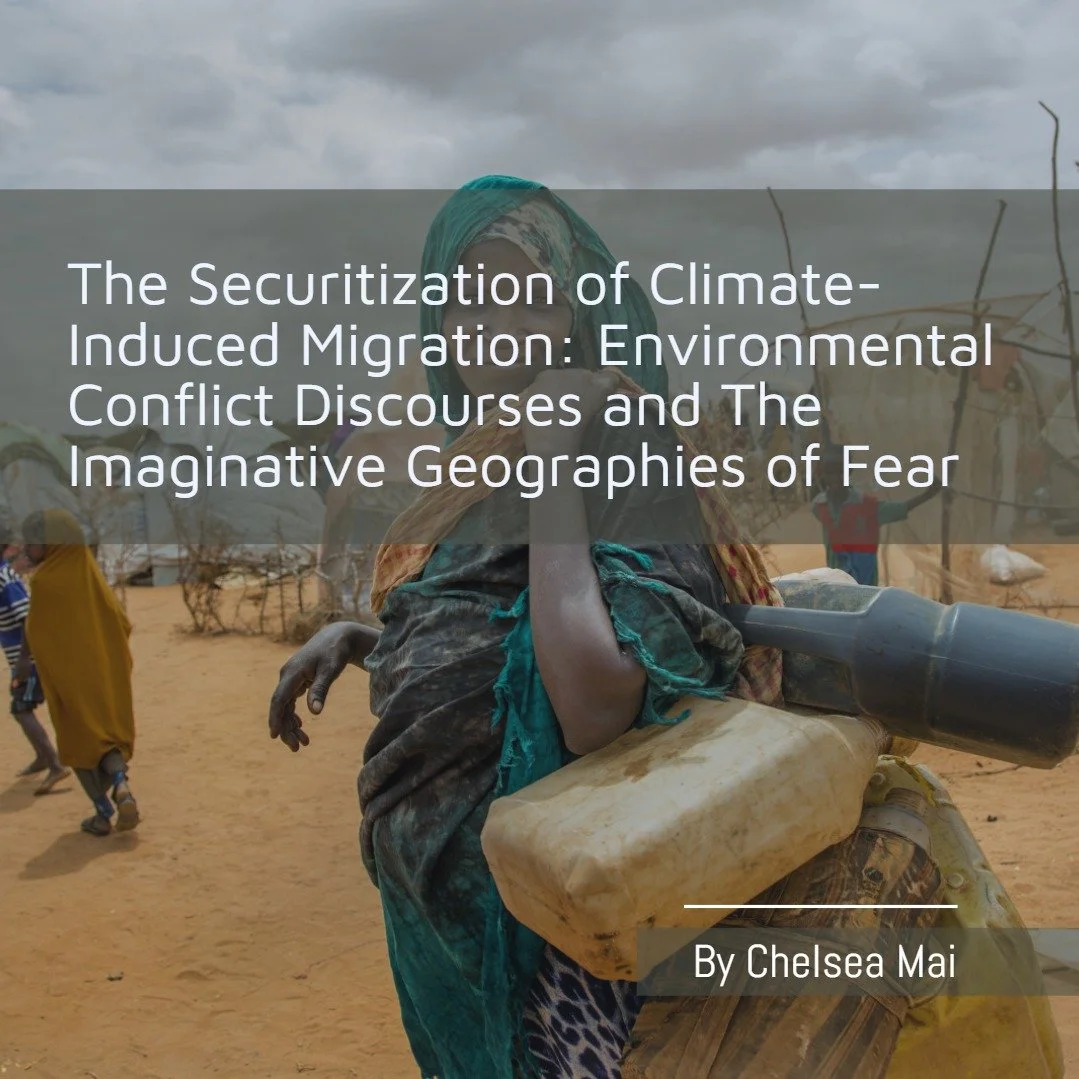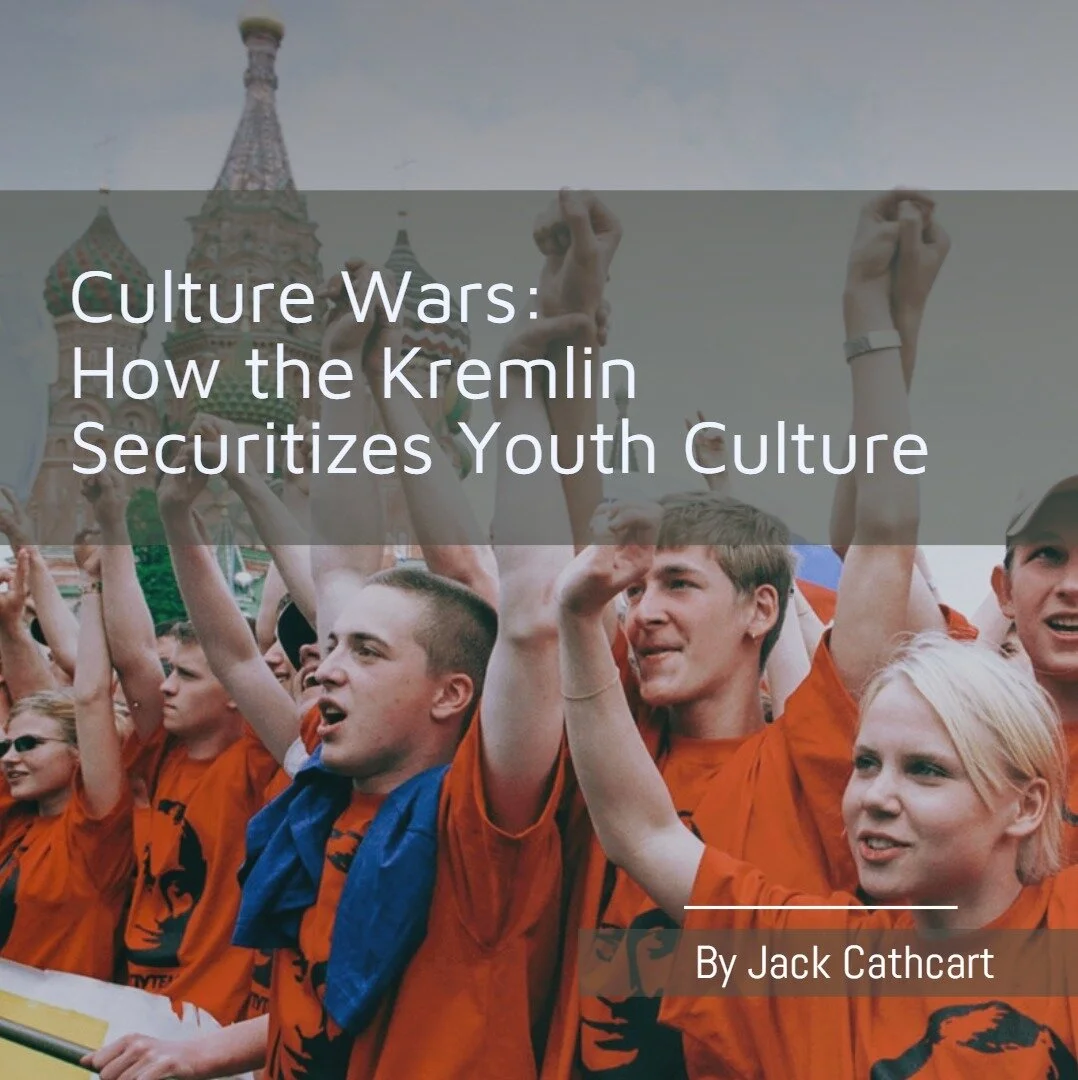On February 24th, Russia launched a full-scale invasion of Ukraine. Although evidence detected by United States (US) intelligence services revealed that the Kremlin was planning an invasion [1], the attack nonetheless came as a shock to the whole world. The war in Ukraine is the largest invasion in Europe since the Second World War which has already caused the deaths of thousands and forced millions to become refugees. In light of these devastating developments, it is essential to look back and ask how we got here. For many in the West, Moscow’s actions seem unprecedented. Unfortunately, the Kremlin’s revisionist plans have long been clear for Russia’s immediate neighbours. However, alarms raised about Vladimir Putin’s imperial ambitions were willfully refused until the Kremlin’s tanks crossed Ukraine’s border.
Land Without Law: The Effects Of Amazon Deforestation On Brazil’s National Security
Discourse constructed by the Brazilian military dictatorship framed deforestation as a tool to secure the nation and develop the Amazon region. This strategy has been revived by the current government of Jair Bolsonaro, despite its discordance with both the Brazilian population’s own perception of security and with Brazilian law, which defines unauthorised deforestation as a crime. The non-compliance of environmental norms produce manifold negative consequences not only for Brazilian society but also for the state, as it weakens the authority of legal institutions and may compromise positive diplomatic relations with other nations. Furthermore, in contrast to the governmental narratives, the destruction of the forest for cattle breeding and agricultural fields, in reality, does not generate profitable economic consequences for the Brazilian state and does not accelerate development in the Amazon region.
The Situation in Afghanistan and the Prospects of Peace and Stability in the Region
The article attempts to analyse the situation in Taliban-ruled Afghanistan and its possible implications for the neighbouring countries and global powers. It builds arguments based on the ongoing developments in Afghanistan, challenges faced by the Taliban regime, apprehensions of neighbouring countries and risks for competing global powers. It also highlights that the present scenario has the potential of returning Afghanistan back to the status of a hub of transnational terrorist outfits and becoming a field of competition between rival global powers.
Why we need more climate security and less climate securitization: the case of Kyrgyzstan
The UN Framework Convention on Climate Change, signed in 1992, marked a milestone when climate change concerns were raised globally, and the UN became a powerful speech actor securitizing climate change. In 2007, the UNSC debate on the international security implications of climate change focused on the threat of climate-related conflicts [1][2]. However, military and political institutions constantly frame climate change as a threat to national security and a priority for foreign policy [3] as well as a catalyst for future conflicts [4]. These narratives of danger are caused by the securitization of the environment had shaped policies, favouring technocratic solutions and development interventions in so-called climate hotspots.
Extreme Wives - A gender analysis of online extremism - The case of Jihadi Brides and TradWives
Following the tumult of the Capitol Riot on January 6th, 2021 and the consequent social media ban of former U.S. President Donald J. Trump, debates around Internet governance have regained momentum. This has led to fervent contention on freedom of speech and social medias’ regulatory frameworks of content moderation. A key target of this moderation is extremist groups with a presence on social media, including the alt-right and jihadists. In particular, women of both groups have been playing an important role in the propagation of extremist ideologies online, frequently instrumentalising hyper-femininity to attract new followers. Because normative gender roles are exploited by violent groups, a gender analysis of how women propagate extremist ideologies is essential to effectively respond to online extremism. This article investigates similarities and differences of alt-right and jihadist women’s online presence and the role gender plays in shaping their respective propagandistic and recruitment methods on mainstream social media platforms.
The Environmental Cost of the Future
Technology stands at the centre of human development. With it comes numerous problems, including how humanity has changed and continues to change its environment. This article explores some of the problems surrounding energy security, specifically those associated with Industry 4.0 (the fourth industrial revolution) as well as the field of Artificial Intelligence and Machine Learning (AI/ML). While there are few definitive solutions to the problems created by improving old technologies and implementing new ones, change is dependent on sparking conversations about sustainability and ultimately the type of future humanity chooses to create for itself.
The Securitization of Climate Induced Migration: Environmental Conflict Discourses and The Imaginative Geographies of Fear
The nexus between Climate Change and security has obtained much relevance in the 21st century. Climate Change is perceived to be a source of insecurity that has the potential to exacerbate existing security threats. Climate Change is thus viewed as a ‘threat multiplier’ and a source that can induce violent conflicts when viewed through the lens of Environmental Conflict Discourses. Environmental Conflict Discourses (ECD) link traditional security concerns to the environment. ECD prioritizes the security of the state over the human populations engaging in conflict and also identifies migration as a trend that can aggravate environmentally induced conflict. ECD asserts that groups within society will likely engage in conflict once natural resources deplete due to environmental degradation. Resource scarcity and the conflict that ensues because of climate induced environmental degradation may force people to move across borders and become potential ‘Climate Refugees’. ECDs however, lack widespread empirical evidence to support the claim of a direct causal link between Climate Change, conflict and migration. It can be argued that ECDs have played a more substantial role in the imaginative geographies of fear about climate refugees which have informed policies to securitize Climate Induced Migration (CIM).
Emirati Rain Enhancement Projects: A Legal Analysis
The United Arab Emirates leads the Arabian Peninsula in the implementation of rain-enhancement techniques in a region increasingly challenged by water scarcity. Although cloud seeding is an ancient field of study, it is still poorly understood and controlled, leaving numerous questions unanswered. What are the benefits and limits of these techniques, especially regarding their militarization? To what extent does the state have a right to water contained in the clouds? This article explores the new electrical shock method of cloud seeding of the United Arab Emirates, which compensates for the limitations of older methods, and questions the international regulation of environmental modifications techniques.
Culture Wars – How the Kremlin Securitizes Youth Culture
Since the 2010s youth popular culture has become an object of close attention and management on the part of political actors and institutions in Russia, with substantial funds being diverted towards young people via a national project of patriotic education (Kukulin, 2020) (Hemment, 2015, p 7). From school curriculums that discourage critical thinking to the formation of youth groups such as the infamous Nashi (Ours), the Kremlin has sought to imbue the Russian youth with the “correct” moral values. This article explores how youth culture is firstly securitized and then leveraged, to justify the expansion of further security measures into wider parts of society.
Я, Силовик. Rosgvardiya: The Emperor's New Guards?
The final instalment in this series will explore Rosgvardiya the newly formed National Guard in Russia. From its creation and the roles it fulfils, to its leadership and its future uses, the National Guard of the Russian Federation is a force to be reckoned with. This article will delve into all of these themes and underline how Rosgvardiya fits into the security apparatus of the Russian Federation. Readers should ask themselves the following throughout: Is Rosgvardiya a new and improved method of maintaining the internal security, or is the National Guard the personal police of the Russian President?
Я, Силовик - To Serve and Protect The Regime: The MVD & The OMON Riot Police
In modern-day Russia, policing is one of the most employed professions, with one police officer for every seventy-five people [1]. Considering the legacy of the Soviet Union, this should come as no surprise. In recent times, public order assets have been greatly revamped under President Vladimir Putin. This article explores the development of policing in Russia since the collapse of the USSR, fundamentally analysing the role of the Ministry of Internal Affairs (Ministerstvo vnutrennikh del, MVD) and the importance – and controversies – of Russia’s riot police, the Special Purpose Mobile Unit (Otryad Mobil'nyy Osobogo Naznacheniya, OMON).
Я, Силовик - A Bad Crime Novel? Russia’s Foreign Intelligence Service (SVR)
The Sluzhba vneshney razvedki (SVR) or Foreign Intelligence Service continues to be an extremely potent organisation and key component of Russia’s Security Council in implementing the foreign policy aims of the Kremlin. Accusations of election interference, social-manipulation and widespread cyber attacks have put a spotlight on this branch of the Russian intelligence services. This article will provide an overview of the SVR, outlining its origins from the 1990s and how it operates in relation to the Russian President, Vladimir Putin. It will then detail the SVR’s utilisation of active measures (aktivnye meropriyatiya) in the Kremlin’s continuing conflict with the West.
Я, Силовик. The GRU
The Main Directorate of the General Staff of the Armed Forces of the Russian Federation - (Главное Разведывательное Управление/Glavnoe Razvedyvatel'noe Upravlenie) - or ‘GRU’ is one of the most inconspicuous organisations imaginable. Even among the generally taciturn cohort of Russian intelligence agencies, the GRU has been remarkable in its pursuit of secrecy. Whereas an endless stream of horror stories emanated from the Lubyanka, from the Aquarium - the GRU’s headquarters built atop a mass grave - there was only ever silence. This article will explore this most secretive and dangerous of organisations, offering a detailed assessment by comparing its Cold War past and its modern identity.
Я, Силовик. The FSB: The Sword and Shield of the Federation
Any talk of the Soviet Union or the Cold War inevitably includes the Soviet Committee for State Security (KGB). Just as the Russian Federation succeeded the Soviet Union, so too did a number of organisations and agencies succeed the KGB. This first article will explore one of these institutions, the Federal Security Service (FSB). Beginning with the history and how the service came to be in modern Russia, this piece will go on to explore the nominal role and functions of the FSB. It will also shine a light on the actual role played by the Federal Security Service in Russian politics and society today, as well as touch on some of the controversy that surrounds this organisation. The purpose of this article is to illuminate the FSB as a service and inspire readers to dig a little deeper into the world of the security services of Russia.
Artificial Intelligence: A Game Changer for All-Source Intelligence Activities?
Intelligence agencies today have to collect and analyse intelligence on numerous individuals, state and non-state actors in an environment of many complex hybrid threats and overlapping interests. Additionally, there is a glut of data from several sources that need to be processed quickly and accurately. Artificial Intelligence (AI) presents a viable way to maximise the value of the All-Source intelligence products. Despite all the promise AI holds for the Intelligence Community, the technology is far from perfect.
Plenty of Phish in the Sea: How Artificial Intelligence is Transforming the Oldest form of Cybercrime
Artificial intelligence and machine learning (AI/ML) have seamlessly and fundamentally transformed the way we interact with digital technology [1]. Dual-use applications, such as the case of AI/ML, can be quickly exploited by cybercriminal activities. One example is phishing, one the first types of cybercrime. While phishing in today’s world is still perceived as an outdated scam, AI/ML advancements have paved the way for more convincing phishing attacks and the wider use of hyper-targeted spear-phishing. This article will focus on the AI/ML-enabled transformation of phishing and spear-phishing and the consequences it poses for the cybersecurity environment.
Ethics, Artificial Intelligence and Predictive Policing
AI is increasingly being used in all areas of our lives, including law enforcement. Through pattern identification, AI offers the field of law enforcement an incredible opportunity to better prevent crime. In this regard, AI is being used in predictive policing, or the ability to predict crime before it happens. The practice itself already poses many ethical and legal dilemmas, but AI reinforces these problems. This article explains how the use of AI in predictive policing poses a threat to fundamental rights and proposes a possible alternative.
The Augmentative Effect of AI in The Open Source Intelligence Cycle
Artificial Intelligence (AI) has become one of the most polarising topics and eye-catching terms in our contemporary lexicon; seen as either a paragon of modern technology or as a harbinger of humankind’s technological doom, depending on who you ask. From pocket AIs such as Siri to self educating AIs in Silicon Valley, AI has permeated into virtually all facets of life.
Artificial intelligence and nuclear warfare. Is Doomsday closer? - Cyber Security and AI Series
Artificial intelligence (AI) has the potential to radically change societies. By employing it in numerous fields, ranging from healthcare to the economy can improve humans’ lives. However, this revolutionary technology may cause disruptive imbalances in the military power relations between countries, especially in the field of nuclear stability. Although the development of AI-based defensive weapon systems might improve nuclear deterrence, incorporating artificial intelligence into nuclear offensive capabilities and command and control (C2) systems could accelerate escalation in crisis scenarios.
Switching Off The Lights - Cyber Security and AI Series
There is the confidence that the globalised, networked systems we have built are resilient enough to overcome significant disruptions. What if this confidence is misplaced? This article seeks to answer this question in relation to what is likely the most important of humankind’s networks: the electrical grid. Two methods for conducting a cyber attack against the electrical grid will be considered; the first for disrupting the grid, and the second for destroying core elements. A warning will be offered to the West not to rely on technological supremacy in cyberspace as a deterrent to cyber attacks.





















